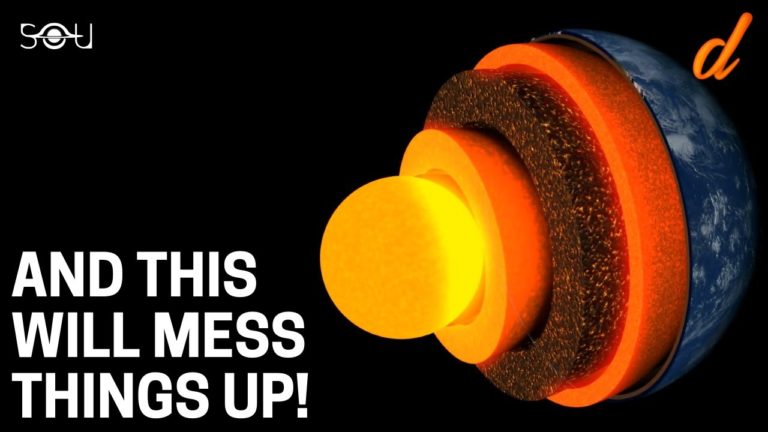Earth’s Core Is Cooling Faster Than We Previously Thought
The Earth has been releasing vast amounts of heat from deep Earth’s interior to the surface since its formation, which primarily drives mantle convection and a number of tectonic activities. In this heat transport process the core-mantle boundary where hot molten core is in direct contact with solid-state mantle minerals has played an essential role to transfer thermal energies of the core to the overlying mantle.
Although the dominant heat transfer mechanisms at the lowermost mantle is believed to be both conduction and radiation of the primary lowermost mantle mineral, bridgmanite, the radiative thermal conductivity of bridgmanite has so far been poorly constrained.
Here we revealed the radiative thermal conductivity of bridgmanite at core-mantle boundary is substantially high approaching to ∼5.3±1.2 W/mK based on newly established optical absorption measurement of single-crystal bridgmanite performed in-situ under corresponding deep lower mantle conditions. We found the bulk thermal conductivity at core-mantle boundary becomes ∼1.5 times higher than the conventionally assumed value, which supports higher heat flow from core, hence more vigorous mantle convection than expected.
Results suggest the mantle is much more efficiently cooled, which would ultimately weaken many tectonic activities driven by the mantle convection more rapidly than expected from conventionally believed thermal conduction behavior.
New research shows the Earth’s core is cooling faster than we previously thought. Geologists studied the behavior of a mineral called Bridgmanite present at the boundary of the outer molten core and the inner mantle.
A molten core is crucial to sustaining geological activity on our planet. Without it, the magnetic field would vanish, and the Earth would become a barren world like Mars or Mercury.
REFERENCES:
Research Paper: sciencedirect
Article: sciencealert
Do not forget to share your opinion with us to provide you with the best posts !




0 Comments